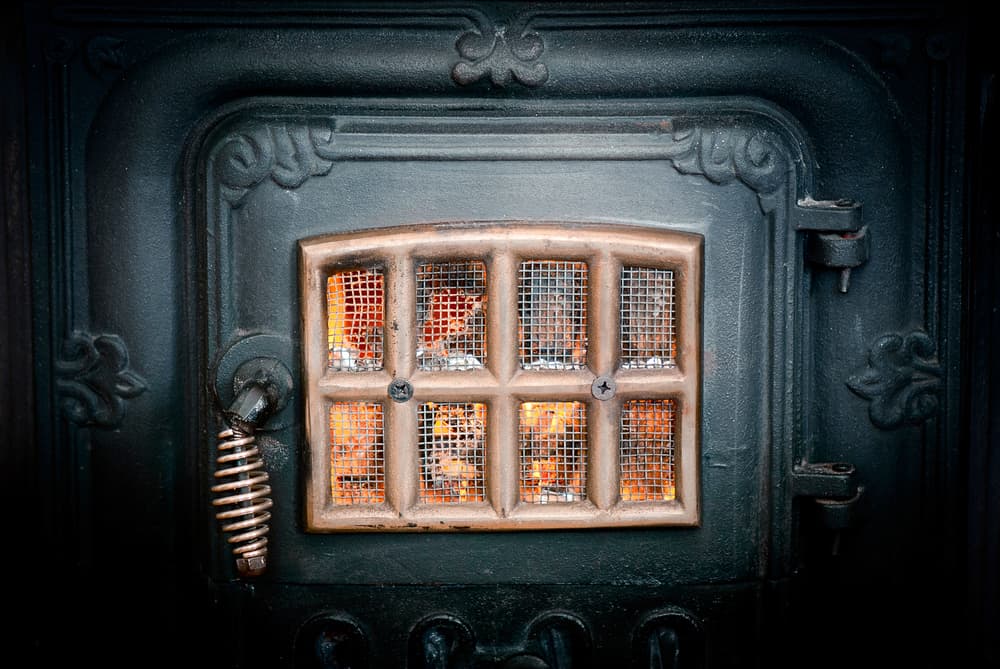Antique wood stoves have been on the market for more than 200 years, and some of them hold great value.
If you own such a unit, maybe you want to know more about its history to figure out its value. Or perhaps you’ve found an antique wood stove that you want to purchase, and you want to identify it correctly so that you can sell it for a good price.
Either way, this guide is for you because we’ll teach you how to identify an antique wood stove, we’ll talk a bit about the history of the products and their value. So, keep on reading!
Table of Contents
Antique Wood Stoves – Brief History
Back in the 18th century, people were using open fires to cook, but also as a heating source. However, in the earlier 1700s, the cast iron stove was introduced. These stoves were used for heating purposes, but also for cooking and doing laundry.
The arrival of cast iron stoves allowed people to stop relying on open fires for their needs. These stoves were made in Germany, and they used to be called “Jamb Stoves” or “Five Plates”.
In the 1740s, the six-plate also appeared, while later, in 1760, people were able to see the ten-plate cook stove. What made the ten-plate type of stove unique at the time was the fact that it included an oven too, while having two hinged doors.
The 19th century is when wood stoves became more common. They were much lighter compared to those from the previous century.
Then, in the early 20th century, innovations were made to wood stoves. Not only were they larger, but they also had some additional features. A water reservoir or warming drawer could be found beside or above the firebox.
Ceramic wood stoves had a more stylish look, and they improved the parlor or kitchen aspect. To make the stoves look even better, drawer pulls and handles with fancier designs were added to them.
The Early Antique Wood Stove Manufacturers
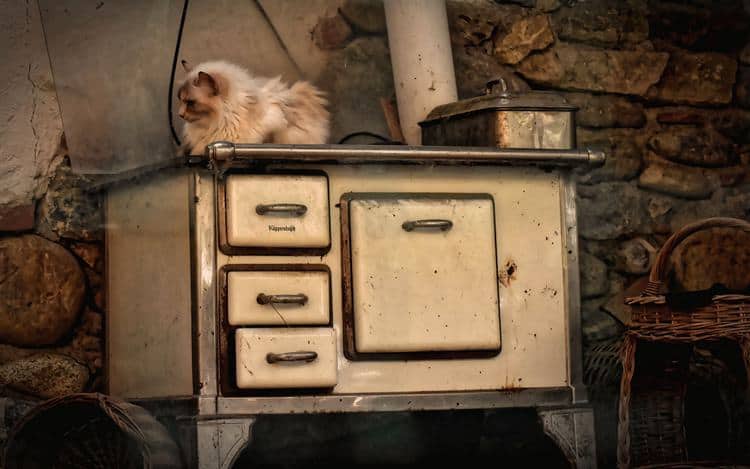
Wood stoves quickly became popular once they started being made, and there were a few manufacturers that sold them.
There were several wood cook stoves manufactured by the Charter Oak Stove company.
But there were other companies developing wood stoves back in the day, including the Chattanooga Stove Company, J. Woodruff and Sons, as well as the Coldwater Oil Stove Company.
How to Identify Your Antique Wood Stove
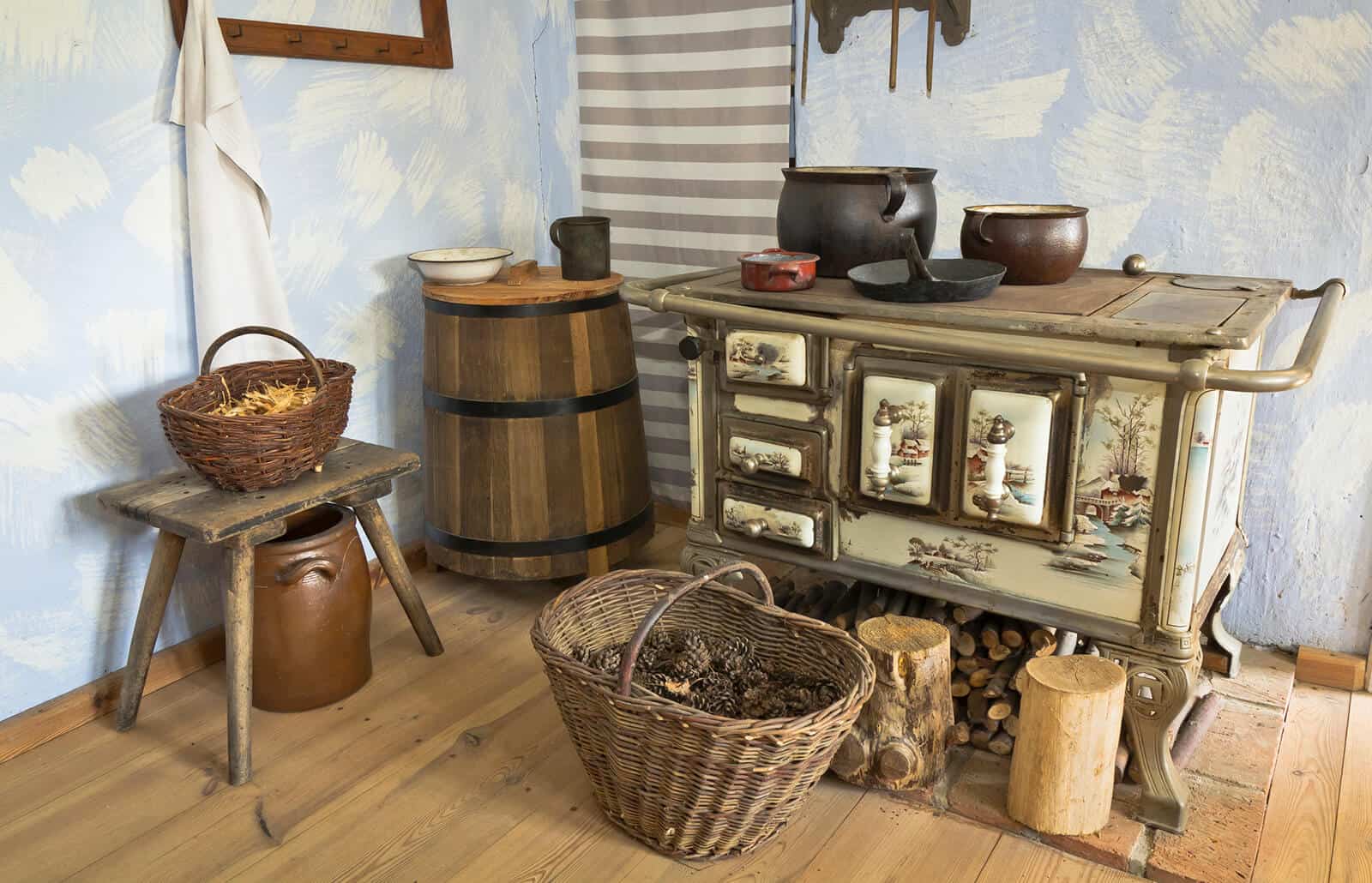
There were different types of stoves at the time. So, if you want to identify an antique wood stove, you must carefully examine the unit to determine its age and ensure you are indeed looking at an antique unit and not a counterfeit product.
Here are all the different factors you will have to consider when identifying an antique wood stove:
1. Identify Based on the Type of Wood Stove
The type of wood stove is a major factor to consider in identifying the unit. This is because there were numerous wood stoves, with each one having specific features that added to its uniqueness. The body of the stove and other aspects will let you figure out which style you are looking at.
Here are the common antique wood stove types one may own or see on auction sites:
- Eisenglass Stoves
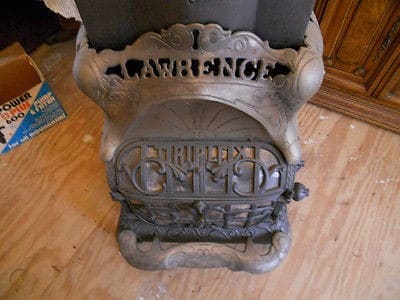
An Eisenglass stove will look like something straight out of a fairytale. These units were made using thin “Mica” sheets that were not only flexible but also transparent. As time goes by, these stoves lose their natural color and may flake as well.
What is noticeable is that the stoves were given a fire viewing window. So, owners could always monitor the fire.
- Franklin Stoves
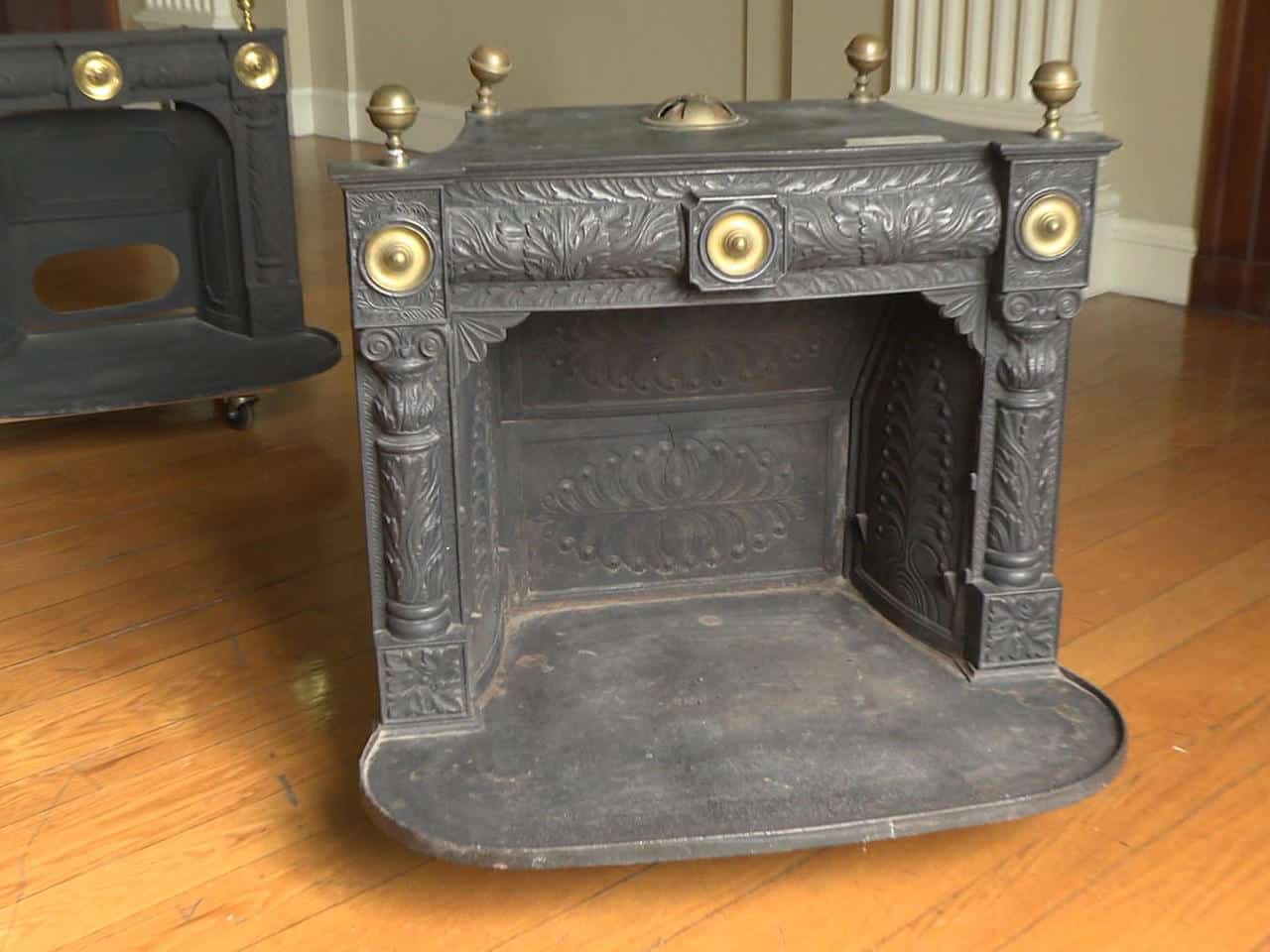
The Franklin stove was created by Benjamin Franklin, and it was used as an inspiration by many other wood stove manufacturers.
This type of stove looks similar to a fireplace insert. Its doors are three-sided with iron hinges. Some of its features included fast wood-burning abilities, but also an open front.
Unfortunately, its original design started being advised against for safety reasons.
- Soapstone Wood Stoves
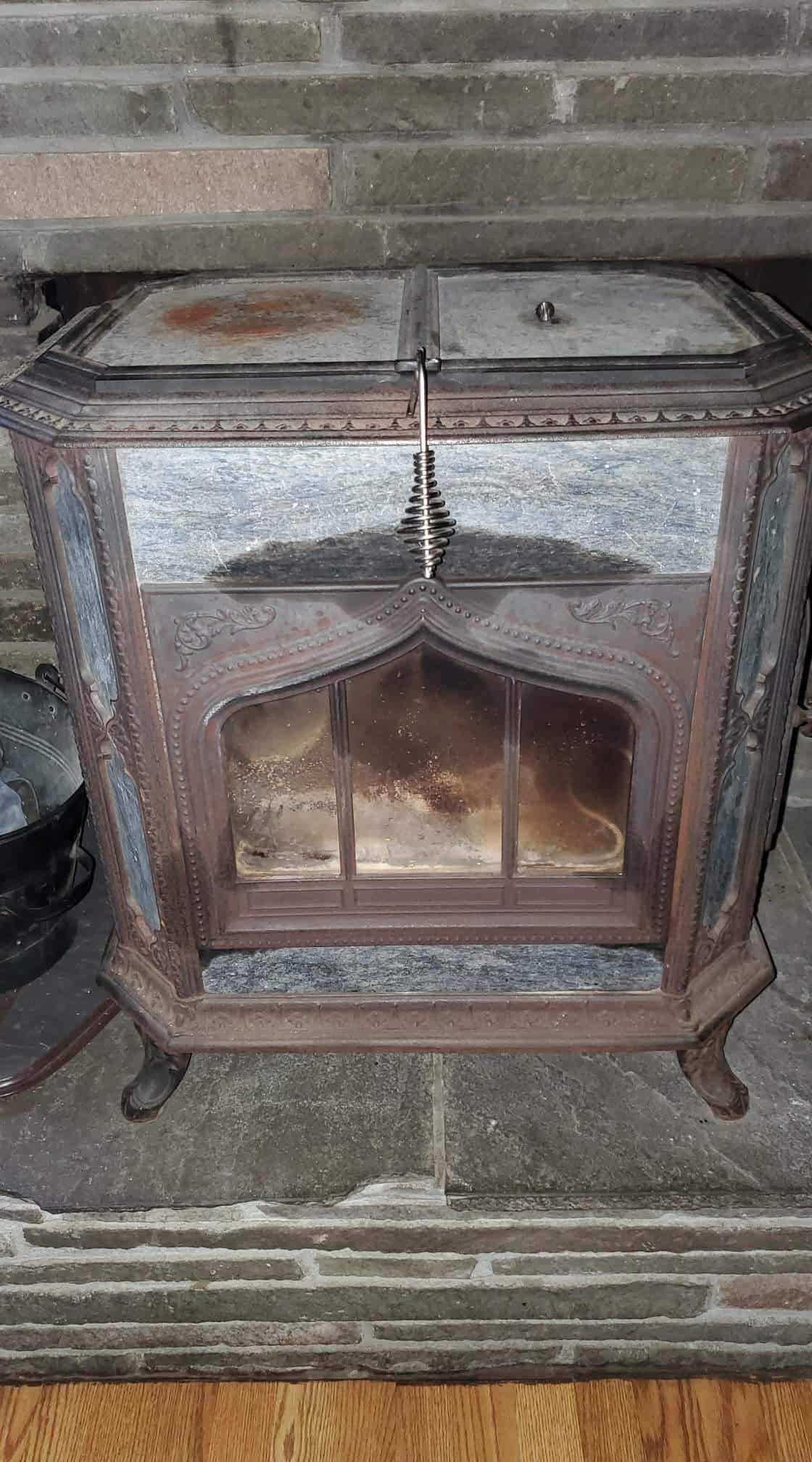
Unlike other stoves, the Soapstone wood stove was, just like its name suggests, made from soapstone. People mainly love these stoves due to their impressive heat conducting ability.
- Ceramic Wood Stove
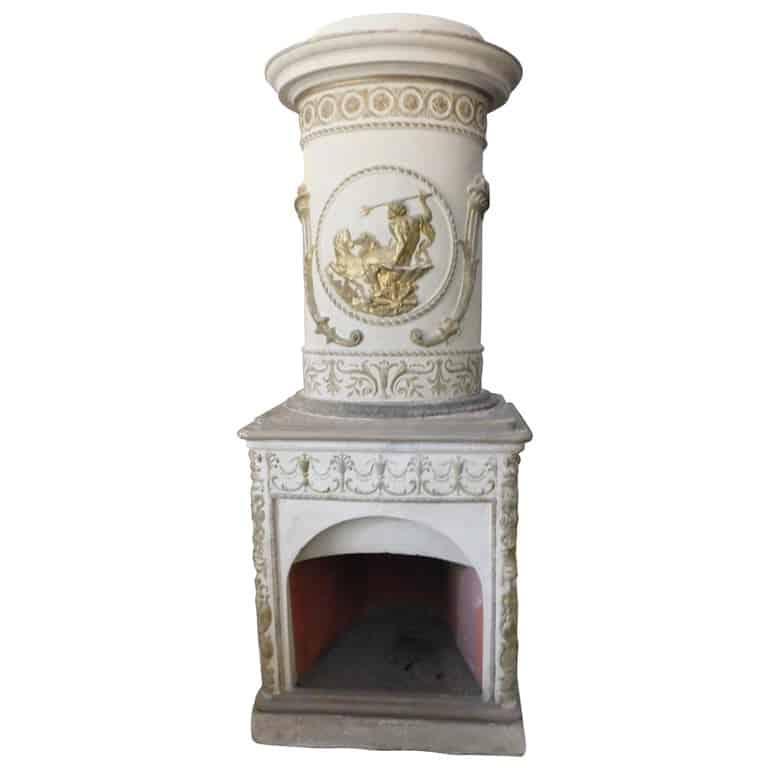
Ceramic wood stoves were certainly some of the most common stoves people owned at the time. They used to be very popular in the 1800s.
Due to the fact that they had ceramic tiles, they were very effective in conducting heat. What’s more, when the fire was low, they still kept the cold out.
- Wood Cook Stove
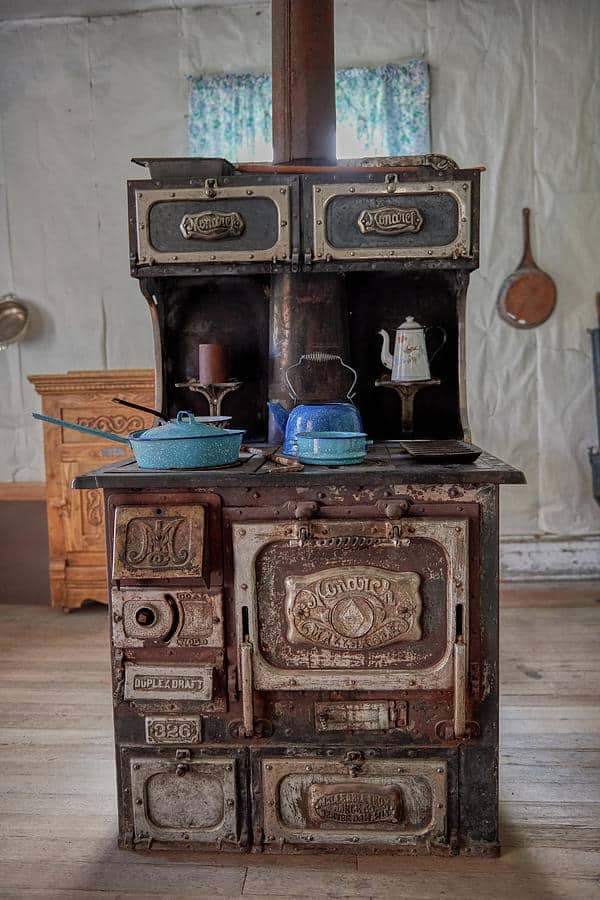
Obviously, these stoves were made to be used in the kitchen. To help with cooking, they had an oven on one side and one to four burners at the top. Also, on the other side of the stove, there was a stove box to start a fire by burning wood.
- Cast-Iron Wood Burning Stove
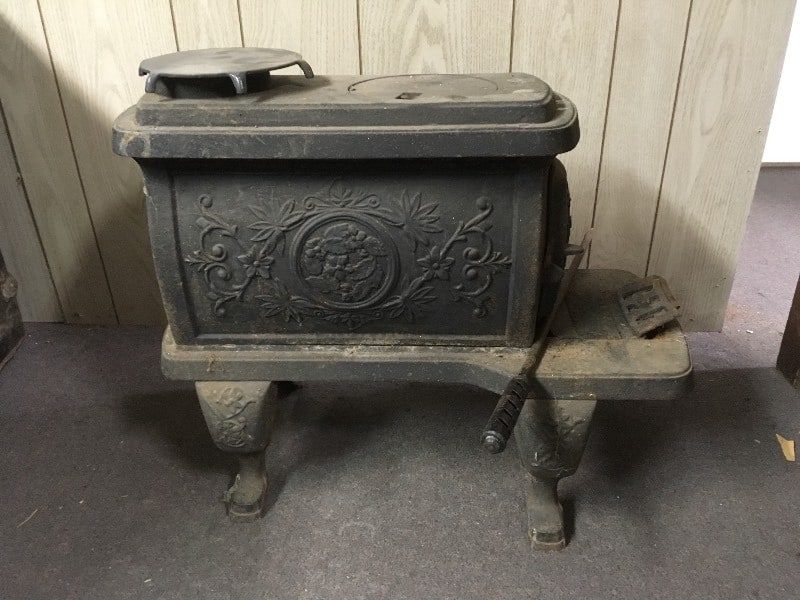
Most people are familiar with the cast-iron wood-burning stove. Owners would insert wood inside through the door to use it. A pipe was coming out from the back of the stove, and the unit was made from cast iron.
- Pot-Belly Stove
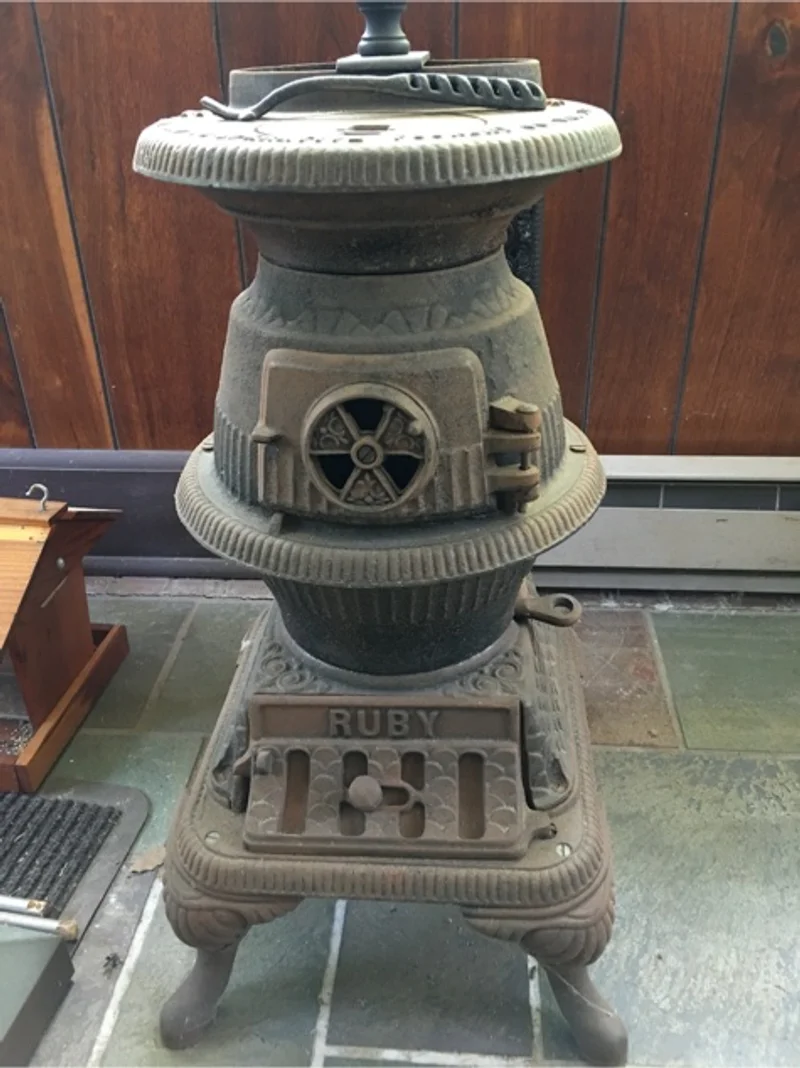
Another popular stove type was the pot-belly one. Its fire loading area was round, which was one of its unique features. Also, you could see a pipe siphon coming out of the top of the stove.
- Parlor Stove
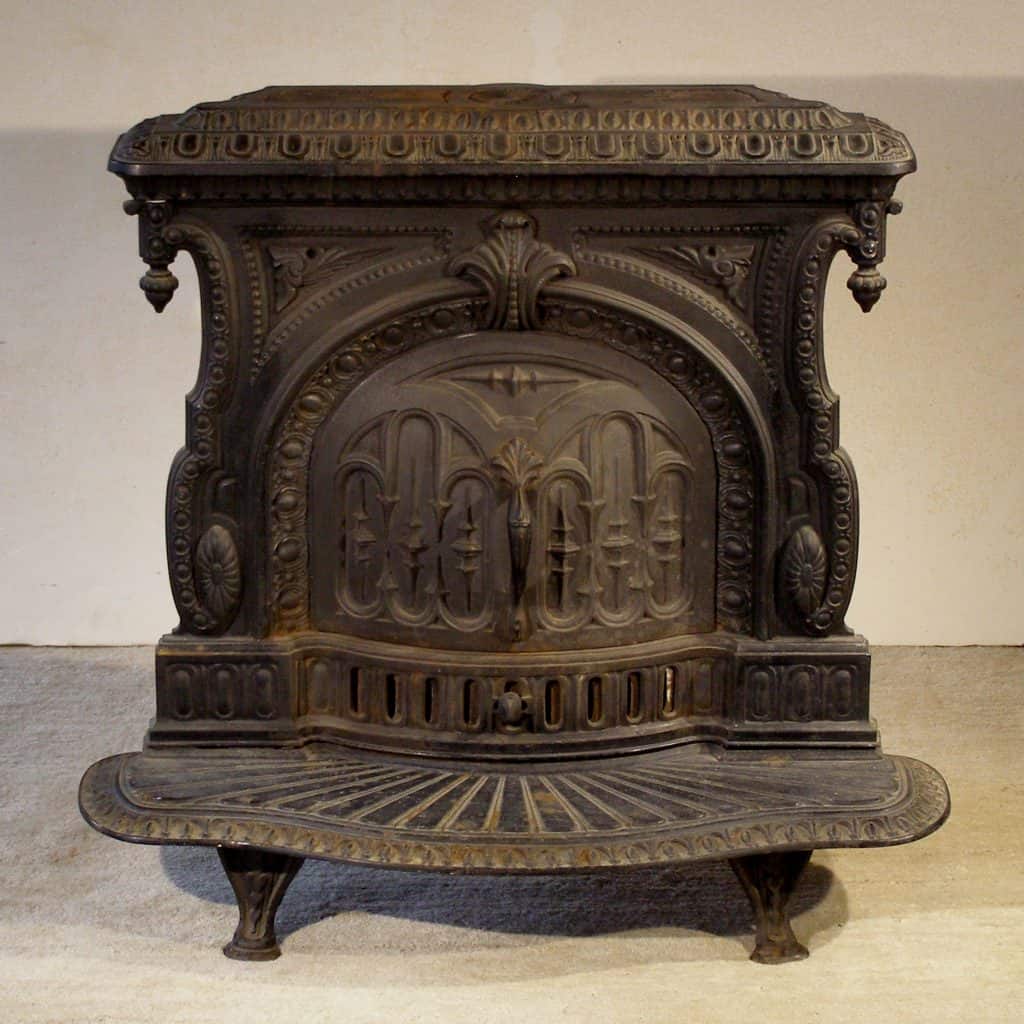
During the Victorian era, one of the most common stoves was the parlor stove. Compared to other heating units, this one had a more elegant aspect and was much smaller.
However, it couldn’t heat more than one or two rooms due to being so small.
2. Check the Paint on Your Stove
Some antique wood stoves still have paint on them. Usually, it will be dark brown or black.
In some cases, there is no paint anymore, which should allow you to see the cast iron material.
3. Look at the Chimney
Chimneys are responsible for transferring the smoke from the fire up through your house so it can safely escape without polluting your space.
The heat grate type will tell you whether you are dealing with an antique stove or not. So, check the heat grate and if the unit has one, you’ll be able to tell whether you’re looking at a fake product or not.
Newer stove models will not have a grate like this to make the collection of more heat possible.
4. Check the Stove Legs’ Design
When it comes to the legs of the stove, antique units will have a distinctive look. There will be no obvious screws or bolts, and the legs will be a bit spread out.
For antique stoves, you should expect the legs to have a short base and be quite “sculpted”. But if you notice two bolts in the unit’s legs, the chances are that it is not an antique wood stove.
5. Analyze the Parts
Antique stoves have a mix of wood and metal parts, whereas the majority of stoves made today have all-metal ones.
Therefore, check your unit and see if you find any parts that are made of wood. It will tell you if the stove is antique or not.
6. Check the Pipes
Two pipes will be found on either side of a unit that is connected to the chimney if it is an older model. Also, the wood of the unit or the pipes shouldn’t have any rust showing through and they should be dark-colored.
7. Analyze the Doors
The doors should quickly tell you if you are looking at an antique unit or not. Every vintage wood stove is unique, and the door will have an exceptional design that is rare to find anywhere else.
Check for knobs and latches on the door. Also, make sure that the knobs are made of metal and the doorknob is made of wood. These features will indicate that the stove is an old one.
8. See If There’s a Draft Door
Draft doors can be flipped open in order to make airflow adjustments to the stove, and they have a round shape. Antique stoves have such a door that is almost always rusty.
9. Check for a Stovepipe Adapter
Stovepipe adapters are used to help a newer stove style to fit into older piping. This type of piping enabled antique wood-burning stoves to work. You can usually detect a stovepipe adapter by looking at the pipe and seeing if it has its end tapered.
10. Search for the “Made in…” Words
Not all stoves were manufactured in the U.S. Therefore, a wood stove will not be antique if someone tells you that it was made in America. This is because it will not be old enough in this case.
Moreover, for the stove to be older, the words “Made in…” should not be painted on the unit with newer paint. If newer paint was used, the stove is likely not an antique one.
11. Look for Cast Iron Body
In order to resist the elements and maintain their condition, many stoves were made with cast iron. This material is very resistant and will not rust.
To show cast-iron patches, a lot of antique parlor stoves will appear to have a chipped paint look. Large cast iron patches are indicators of an older model, therefore a confirmation of an antique unit.
12. Search for Brand Name Mark
Each manufacturer will place this mark differently. Still, most of the time, the brand name is imprinted on the body of the unit. However, you might also see it on the back of the unit or at the sides.
Check for a metal plate that was attached to the stove. It should have the name of the brand, and even a model number sometimes.
Brand names that appear on stoves might include Queen Atlantic, Glenwood, Clarion, Charter Oak Stove Company, Home Comfort, and others.
13. Check Patent Number
Many old wood stoves, especially cast iron ones, will have an identification patent number on them. There should be a set of numbers somewhere on your unit featuring the “PAT” letter group in the beginning.
Check patent databases like The United States Patent Office and search the number you find. You might be able to find the year a patent was issued, and you’ll see how old the stove is.
14. Look at the Heat Source
Wood was used as a heat source for a long time, at least until manufacturers started searching for other sources after the iron and coal mining business expanded.
Check your stove and see if there is an ash pan section. Stoves that burn wood shouldn’t contain any ash pan section. Underneath the stove, there should also be a controllable vent that helps bring air over the fire.
Meanwhile, stoves that burn coal will work better when the air source is under the flame.
If the stove has a cord attached to it or it has a section allowing you to attach a cord, you are looking at an electric stove. If you see a valve that is hooked up to gas lines, then you have a gas stove in front of you. These are modern units.
How Much Is an Antique Stove Worth?
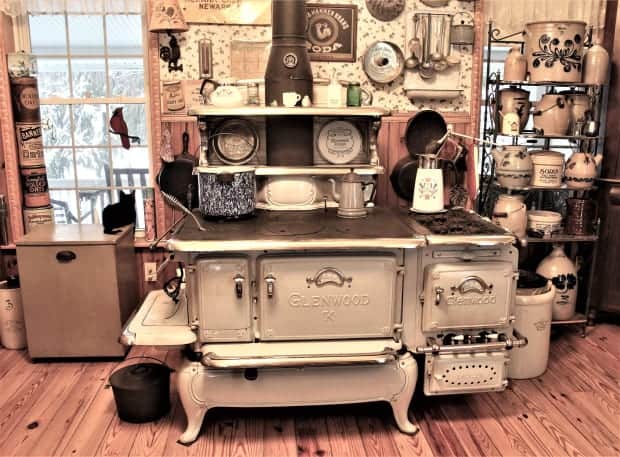
Antique wood stoves have various prices. An old stove may cost $30-$40 in scrap. However, it usually values more than that. Depending on the age and type of wood stove, the prices may start at $100 and go up to $1,000 or even more in some cases.
In general, a stove’s value will be influenced by different criteria, like its age and condition.
The older the model, the higher the price you may get. The rarity of the model will play an important role in its value and so will its condition. If the antique wood stove is in good condition with minimal damage, then its value will grow. But if it has cracks, rusted parts, and even missing parts, you should expect the value to drop.
Models like the 10-plate stove, for instance, may cost more than $3,000 in auctions. Of course, this price only applies as long as the stove has no flaws. The same value usually applies to a working parlor stove dating back to 1853.
Vintage, rare models like an enamel cook stove may cost between $1,200 and $2,500, depending on their condition.
Here are a few steps you can take to determine the value of an antique wood stove:
1. Check for Damage
Look carefully at the stove to see if it has any damage. Search for cracks, rust, but also missing parts, and other flaws. The quality of the antique wood stove will have an impact on the price, and significant problems will lower the value of the unit on the market.
2. Find Out How Rare the Unit Is
If you’re dealing with a rare unit, the price will increase because the model is harder to find. Research the model to find out when it was created and look into its scarcity.
3. Check Current Listings
Websites like eBay, Craigslist, or Etsy could help you estimate the value of your antique wood stove. Many people list their old stoves for sale here, and their pricing could help you get an idea of how much a particular stove is worth.
4. Seek an Appraiser’s Help
If you’re in the dark, you should get an appraiser to help you. If they’re experienced, they can tell you the exact market value of an antique wood stove and save you the trouble.
Final Thoughts
Identifying an antique wood stove can be time-consuming, but it’s worth it if you want to invest in something legit or if you are planning on selling an old stove. Use the guidelines in this article to identify the unit and see how much it’s worth.
